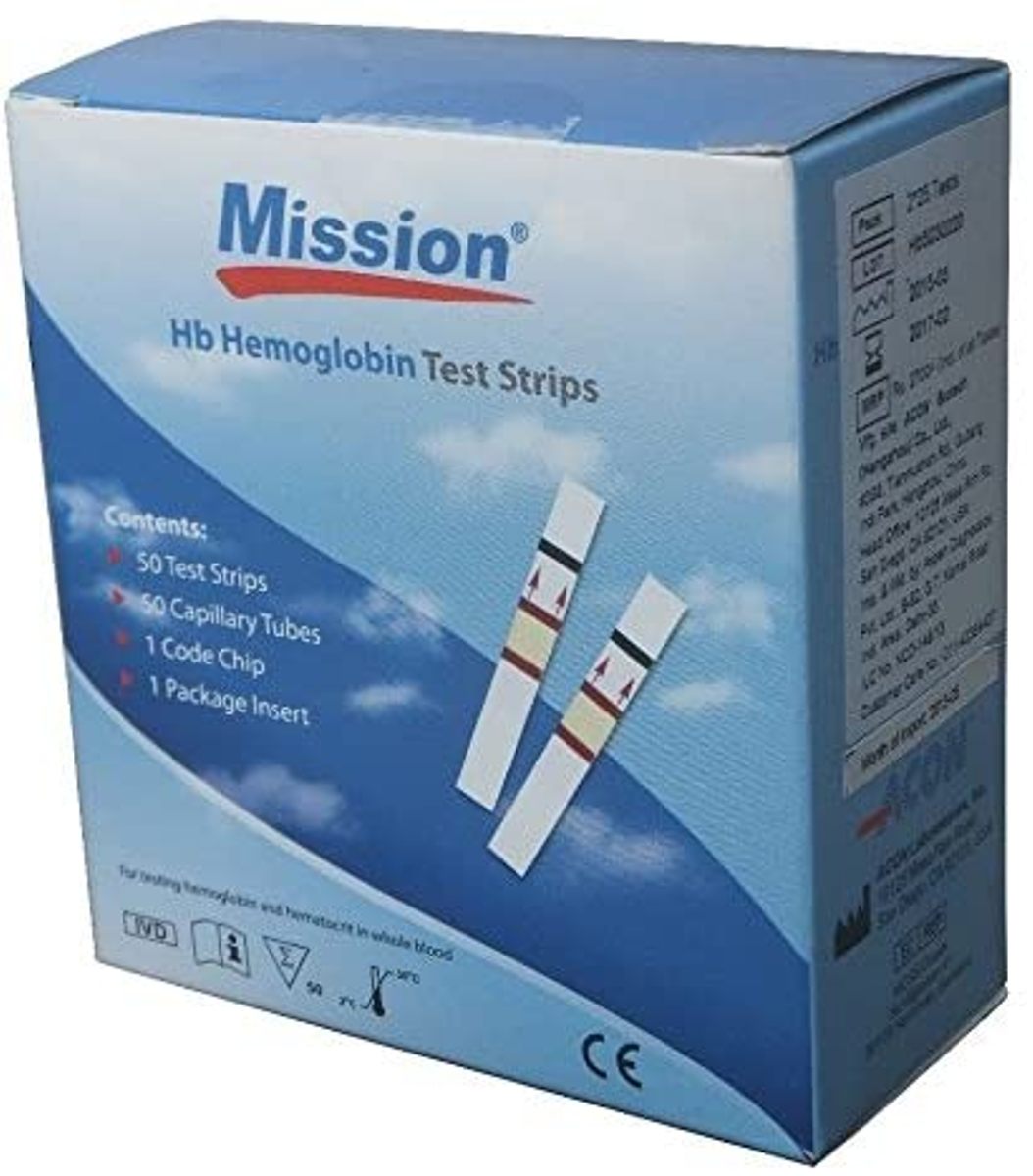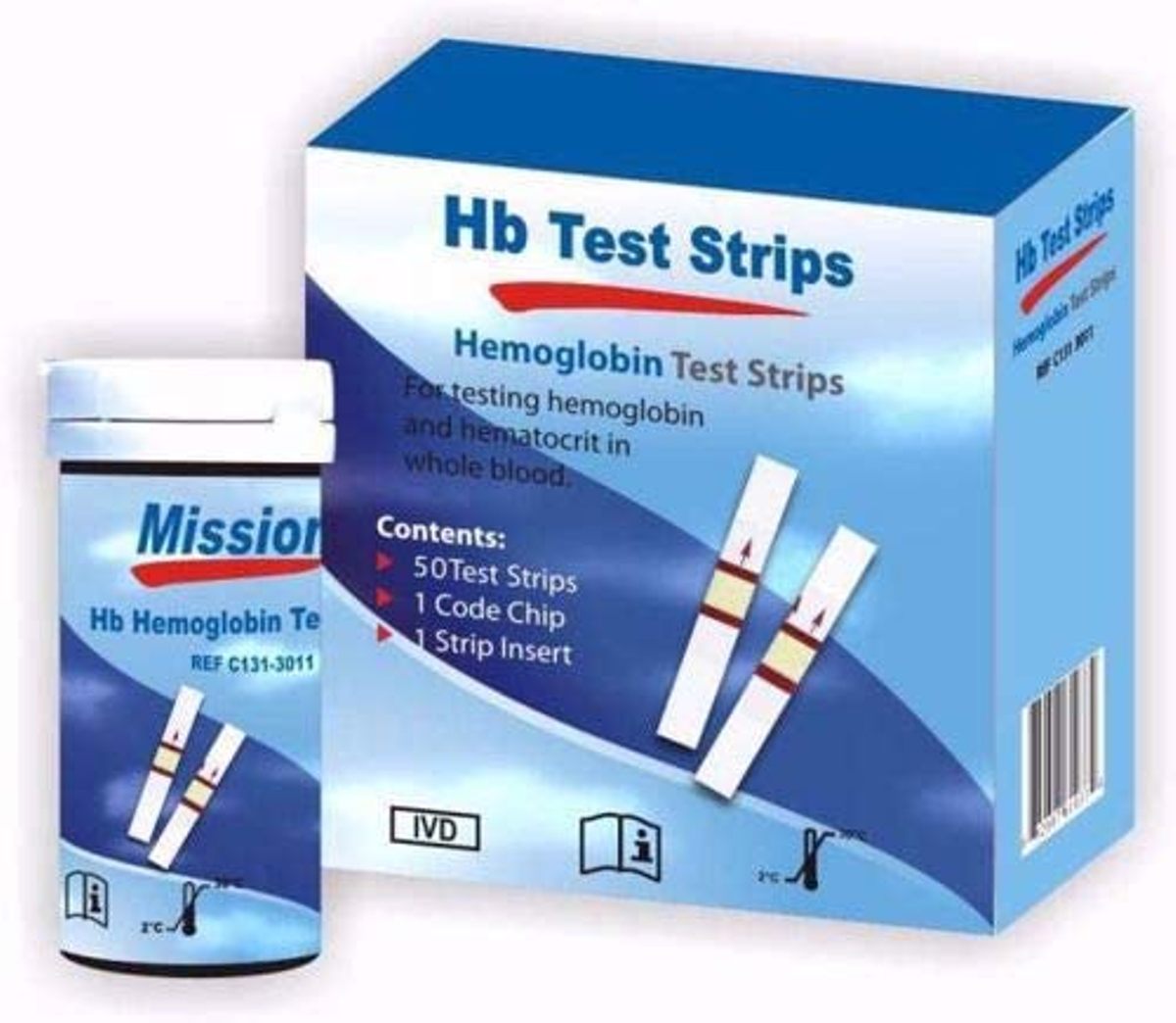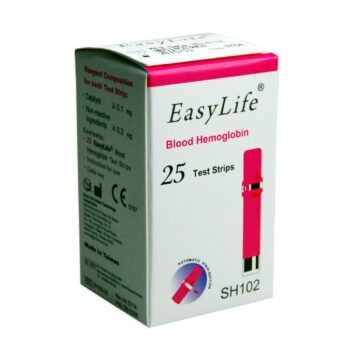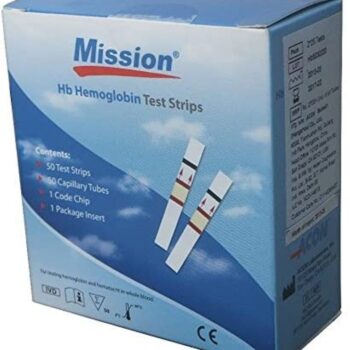Mission (Acon) Hemoglobin 50 Test Strips
Mission (Acon) Hemoglobin
Methemoglobin time to results < 15 seconds
Specimen volume 10 l
Specimen type capillary and venous whole blood
Hb measurement range 4.5-25.6 g/dl
Hct range 13-75%
Accuracy : hb 4.5-10 g/dl, 0.4 g/dl; hb 10-25.6g/dl, 4%
Operating conditions : 15-30 c (59-86 f); 85%
Rh strip storage conditions 2-30 c (36-86 f); 85%
Rh strip shelf life 2 years unopened canister; 3 months opened canister
All tests CE certified for European clinical (professional) and self-test use.
Knowing your blood sugar levels helps you manage your disease. When you regularly check your blood glucose, you’ll learn which foods, medications, and activities affect your blood sugar in a good or bad way.
How to Use a Test Strip
To check your blood sugar, you:
- Put a test strip into your blood glucose meter.
- Prick your fingertip with the meter’s tiny needle (called a lancet).
- Squeeze out a drop of blood and touch it with the edge of the test strip.
Within seconds, the glucose meter will give you a blood sugar reading.
You can only use a test strip once. That means you’ll have to take out a new one every time you check your blood sugar. Your doctor will tell you how often to check. It may be as much as 10 times a day if you have type 1 diabetes. Or it may be just twice a day if you have type 2 diabetes.
How Test Strips Work
Diabetes test strips pack a lot of technology into a small space. The plastic strips are coated with a very thin layer of gold. The gold is cut into a pattern that becomes the strip’s circuit.
One end of the strip also has a coating of chemicals. They soak up your blood like a sponge and turn the glucose into electricity.
An electrical signal travels from the strip to the meter. The number you see on the meter is the speed of the electrical current. More blood sugar means a stronger signal. A stronger signal means a higher number on your blood glucose meter.
Contact us if you need more information about this product.



 100% Money back
100% Money back Quick delivery
Quick delivery















Reviews
There are no reviews yet.